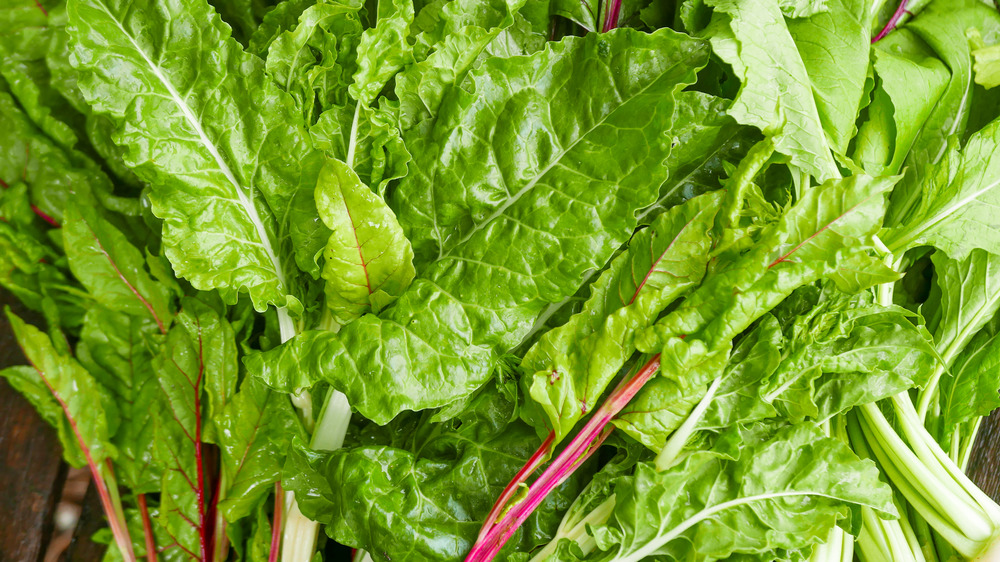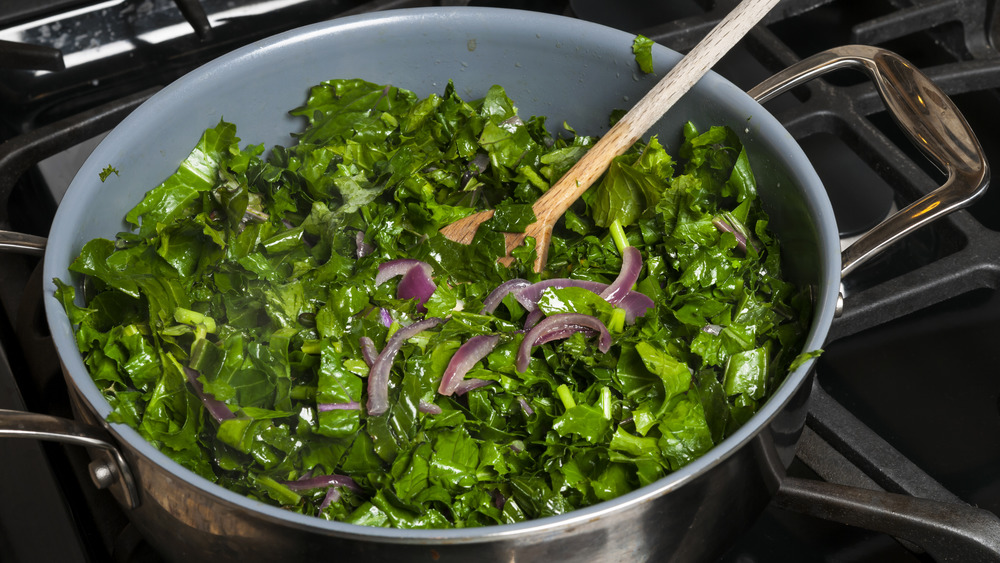This Is Why You Should Be Adding Kale When Cooking With Chard
If you're trying to eat healthier, you could go full-out vegan, start intermittent fasting, or cut out all processed foods. But an easier way to clean up your diet — without drastically changing how you eat — is to simply start eating more leafy greens. Whether you toss them in a salad, blend them into a superfood smoothie, or sneak them into a bowl of pasta, plants like spinach, chard, kale, and arugula are packed with plenty of good-for-you antioxidants, vitamins, and minerals.
Take chard, for instance. With its dark leaves and stunning purple stalks, it's very low in calories but very high in vitamins A, C, and K, along with nutrients like calcium, magnesium, and iron (via Healthline). You can use chard in any number of dishes, from casseroles to stir-fries to salads. However, when you're cooking with chard, it might be a good idea to add in some kale with it, food bloggers and home cooks say. Here's why.
Kale adds more structure and flavor
While chard may be healthy and delicious, it doesn't always do the best when cooked on its own. The delicate leaves cook very quickly and, similar to spinach, lose their shape so what starts as a massive pile of raw chard wilts down to a tiny handful (anyone who has sautéed spinach knows this struggle). That's why Cook's Illustrated recommends adding kale in with your chard. "We use both chard and kale, as kale adds structure while tender chard collapses when cooked," the culinary site explained in an Instagram post. Meaning, you won't end up with a mushy mess.
Epicurious adds that the heartier kale leaves will maintain their size, shape, and texture when cooked, and won't dramatically decrease in volume. The blogger behind Margaret's Dish says she also likes to combine kale and chard because they each have unique flavors that blend well together. Kale is more "peppery and earthy" while chard has slightly sweeter undertones.

